Email spoofing is a form of cyber attack in which a hacker sends an email that has been manipulated to seem as if it originated from a trusted source.
Email Spoofing Definition
Contents
Email spoofing is a technique used in spam and phishing attacks to trick users into thinking a message came from a person or entity they either know or can trust. In spoofing attacks, the sender forges email headers so that client software displays the fraudulent sender address, which most users take at face value. Unless they inspect the header more closely, users see the forged sender in a message. If it’s a name they recognize, they’re more likely to trust it. So they’ll click malicious links, open malware attachments, send sensitive data and even wire corporate funds.
Email spoofing is possible due to the way email systems are designed. Outgoing messages are assigned a sender address by the client application; outgoing email servers have no way to tell whether the sender address is legitimate or spoofed.
Recipient servers and antimalware software can help detect and filter spoofed messages. Unfortunately, not every email service has security protocols in place. Still, users can review email headers packaged with every message to determine whether the sender address is forged.
A Brief History of Email Spoofing
Because of the way email protocols work, email spoofing has been an issue since the 1970s. It started with spammers who used it to get around email filters. The issue became more common in the 1990s, then grew into a global cybersecurity issue in the 2000s.
Security protocols were introduced in 2014 to help fight email spoofing and phishing. Because of these protocols, many spoofed email messages are now sent to user spamboxes or are rejected and never sent to the recipient’s inboxes.
How Email Spoofing Works
The goal of spoofing is to trick users into believing the email is from someone they know or can trust—in most cases, a colleague, vendor or brand. Exploiting that trust, the attacker asks the recipient to divulge information or take some other action.
For example, an attacker might create an email that looks like it comes from PayPal. The message tells the user that their account will be suspended if they don’t click a link, authenticate into the site and change the account’s password. If the user is successfully tricked and types in credentials, the attacker now has credentials to authenticate into the targeted user’s PayPal account, potentially stealing money from the user.
More complex attacks target financial employees and use social engineering and online reconnaissance to trick a targeted user into sending millions to an attacker’s bank account.
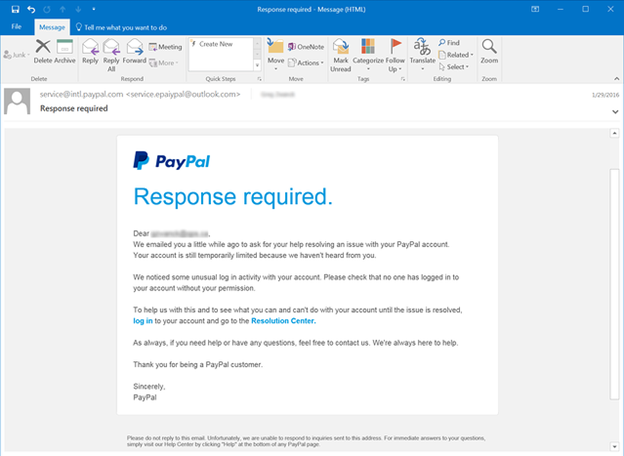
With a typical email client (such as Microsoft Outlook), the sender address is automatically entered when a user sends a new email message. But an attacker can programmatically send messages using basic scripts in any language that configures the sender address to an email address of choice. Email API endpoints allow a sender to specify the sender address regardless whether the address exists. And outgoing email servers can’t determine whether the sender address is legitimate.
Outgoing email is retrieved and routed using the Simple Mail Transfer Protocol (SMTP). When a user clicks “Send” in an email client, the message is first sent to the outgoing SMTP server configured in the client software. The SMTP server identifies the recipient domain and routes it to the domain’s email server. The recipient’s email server then routes the message to the right user inbox.
For every “hop” an email message takes as it travels across the internet from server to server, the IP address of each server is logged and included in the email headers. These headers divulge the true route and sender, but many users do not check headers before interacting with an email sender.
The three major components of an email are:
- The sender address
- The recipient address
- The body of the email
Another component often used in phishing is the Reply-To field. This field is also configurable from the sender and can be used in a phishing attack. The Reply-To address tells the client email software where to send a reply, which can be different from the sender’s address. Again, email servers and the SMTP protocol do not validate whether this email is legitimate or forged. It’s up to the user to realize that the reply is going to the wrong recipient.
Here’s an example forged email:
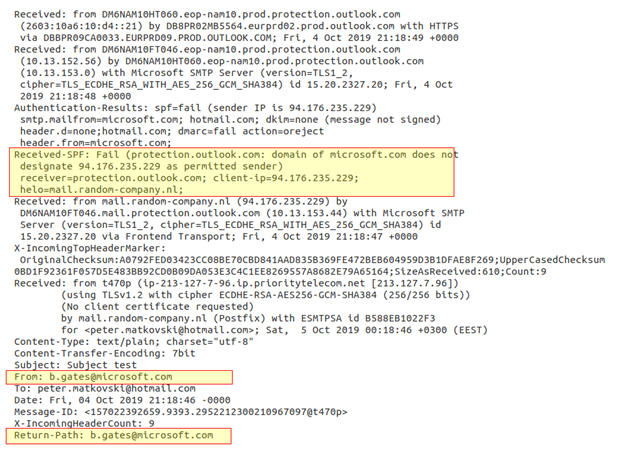
Notice that the email address in the From sender field is supposedly from Bill Gates (b.gates@microsoft.com). There are two sections in these email headers to review. The “Received” section shows that the email was originally handled by the email server email.random-company.nl, which is the first clue that this email is forged. But the best field to review is the Received-SPF section—notice that the section has a “Fail” status.
SPF can detect spoofed email, and it’s become common with most email services to combat phishing. But it’s the responsibility of the domain holder to use SPF. To use SPF, a domain holder must configure a DNS TXT entry specifying all IP addresses authorized to send email on behalf of the domain. With this DNS entry configured, recipient email servers lookup the IP address when receiving a message to ensure that it matches the email domain’s authorized IP addresses. If there is a match, the Received-SPF field displays a PASS status. If there is no match, the field displays a FAIL status. Recipients should review this status when receiving an email with links, attachments or written instructions.
Email Spoofing and Phishing Statistics
Email clients configured to use SPF and DMARC will automatically reject emails that fail validation or send them to the user’s spambox. Attackers target people and businesses, and just one successfully tricked user can lead to theft of money, data and credentials.
It’s no wonder that phishing is one of today’s most prominent cyber attacks. Consider the following statistics:
- 3.1 billion domain spoofing emails are sent per day.
- More than 90% of cyber-attacks start with an email message.
- Email spoofing and phishing have had a worldwide impact costing an estimated $26 billion since 2016.
- In 2019, the FBI reported that 467,000 cyber-attacks were successful, and 24% of them were email-based.
- The average scam tricked users out of $75,000.
A common attack that uses email spoofing is CEO fraud, also known as business email compromise (BEC). In BEC, the attacker spoofs the sender’s email address to impersonate an executive or owner of a business. This attack usually targets an employee in the financial, accounting, or accounts payable departments.
Even smart, well-intentioned employees can be tricked into sending money when the request comes from someone they trust—especially an authority figure. Here are just a few high-profile examples of phishing scams:
- The Canadian City Treasure was tricked into transferring $98,000 from taxpayer funds by an attacker claiming to be city manager Steve Kanellakos.
- Mattel was tricked into sending $3 million to an account in China, but it was lucky enough to claw back the money when the defrauded financial executive was able to confirm that the email message was not sent by the CEO, Christopher Sinclair.
- The Crelan bank in Belgium was tricked into sending attackers €70 million.
How to Protect from Email Spoofing
Even with email security in place, some malicious email messages reach user inboxes. Whether you’re an employee responsible for financial decisions or as someone who uses personal email at work, there are several steps you can take to avoid becoming a victim of email fraud:
- Never click links to access a website where you’re asked to authenticate. Always type the official domain in your browser and authenticate directly on the site.
- The steps to view email headers are different for each email client, so first look up how to view email headers for your inbox software. Then, open email headers and look for the Received-SPF section of the headers and look for a PASS or FAIL response.
- Copy and paste the content of an email message into a search engine. Chances are that text used in a common phishing attack has already been reported and published on the Internet.
- Be suspicious of email supposedly from an official source with bad spelling or grammar.
- Avoid opening attachments from suspicious or unknown senders.
- Emails promising riches—or anything else that’s too good to be true—is likely a scam.
- Beware of emails that create a sense of urgency or danger. Phishing and BEC attacks often try to short-circuit recipients’ natural skepticism by suggesting that something bad will happen if they don’t act quickly. Treat email links with extra caution if the message warns of pending account closures, scheduled payment failures or suspicious activity on one of your financial accounts. Visit the website directly through your browser, not the link in the email.
Other Email Spoofing and Hacking Protection Techniques
Despite the increasing persistence of hackers, there are several steps we can take to prevent our emails getting hacked.
1. Consider the use of a Password Manager
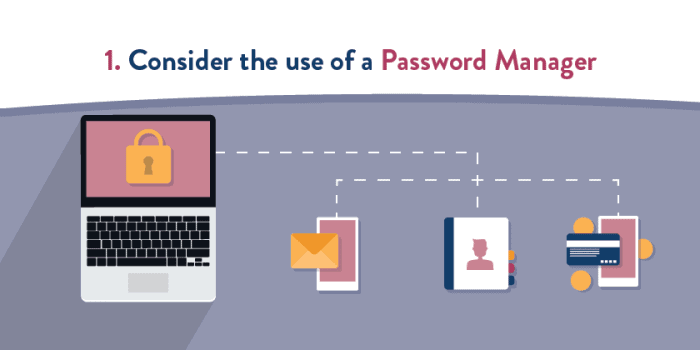
It can be a daunting task trying to remember so many passwords for all our online accounts, but a password manager provides a centralised and encrypted location that will keep a record of all these passwords safe.
Password managers store login details for all the websites that you use and logs you in automatically each time you return to a site. The first step when using a password manager is to create a master password. The master password will control access to your entire password database. This password is the only one you will have to remember so it’s important to make this as strong and secure as possible.
Password managers can also protect against phishing attacks as they fill in account information based on their registered web addresses. If you think you’re on your bank’s website but the password manager doesn’t automatically log you in, there’s a good chance that you’ve strayed on to a phishing site.
2. Watch out for Suspicious Emails
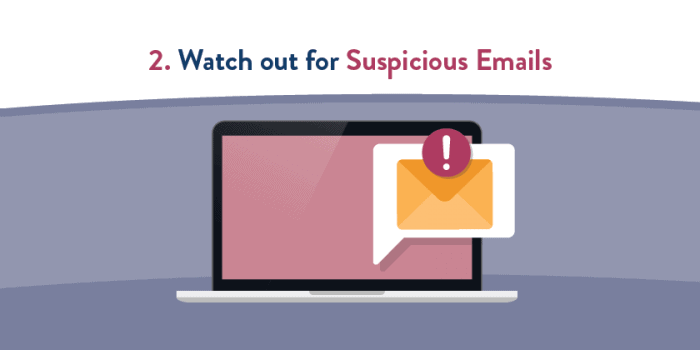
Phishing emails have been around for a long time and despite a wealth of information about the different methods used to target victims, millions of people are still falling for these scams on a daily basis.
Phishing emails are carefully designed to trick you into entering confidential information such as an account number, password or date of birth by clicking on a link. The email may also include an attachment that once opened will directly infect your computer with malware.
Identifying a phishing email has become a lot harder than it used to be as criminals have become more advanced and deceptive in their attack methods. Despite the increasing sophistication of these emails that are often a number of tell-tale signs that may give the game away.
These tell-tale signs can include a mismatched URL, requests for personal information, poor spelling and grammar, unexpected correspondence and the use of threatening language. This is by no means an exhaustive list as attackers are continually tweaking their scams to dupe as many people as possible. You should trust your gut and if something even seems the slightest bit off, you should avoid opening the email or clicking on any links.
3. Use a VPN for Extra Security

A VPN, or Virtual Private Network, is a great tool to help protect your privacy online. It lets you browse the internet safely and securely by routing your connection through a server and hiding your online connections. It effectively encrypts all your data so that a hacker can’t tell what you are doing online or where in the world you are located. Quite simply, your data is safe and secure, and your internet activity is untraceable.
VPNs can be used on a range of devices including a PC, laptop, phone or tablet and it provides an extra layer of security to both private and public networks such as Wi-Fi hotspots. Users can safely bank online, shop, or chat to friends without anyone snooping on their online activity.
4. Activate Two-Factor Authentication
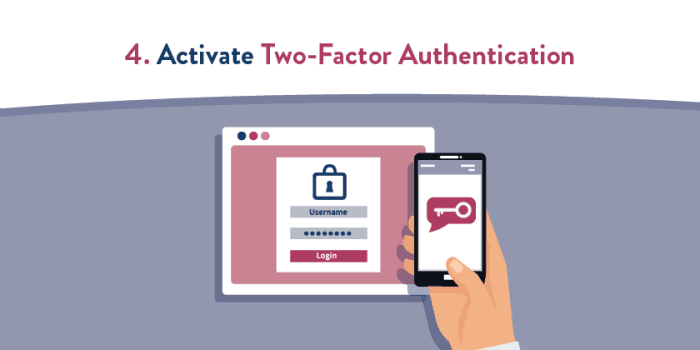
Two-factor authentication offers an extra layer of defence in protecting the security of your email accounts. In addition to a password, two-factor authentication requires a second piece of information to confirm your identity. This reduces the chance of a hacker being able to gain easy access to your accounts.
There are a range of different two factor authentication sites available that can be used for this process. Once you have registered, you can log into your accounts as normal and then enter your password. As soon as you do this, the two-factor authentication site will send a one-off code to your phone that you must enter before gaining access to your account.
5. Secure your Home Router and Wi-Fi
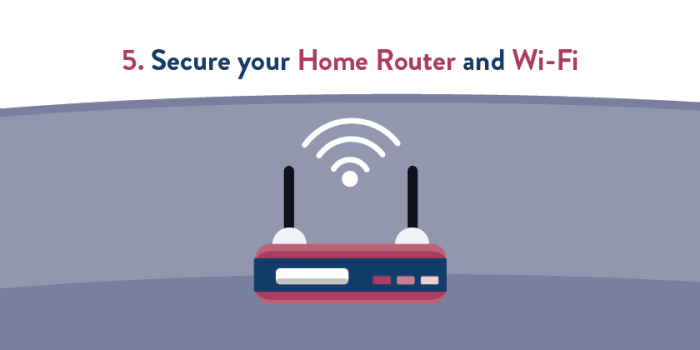
When you’re initially setting up your home network you will be asked to create a publicly visible network name, otherwise known as a SSID (Service Set identifier). Most devices are configured with a default network name that has been allocated by the manufacturer. You should immediately change the default name to make it more difficult for a hacker to know what type of router you have, thereby reducing the chance of attack.
You should also update your Wi-Fi software to protect the network security of your home. The router’s firmware like any other type of software can contain vulnerabilities that hackers will look to exploit. Most routers will not have the option of an auto-update so you will need to manually update the software to ensure your Wi-Fi is protected.
Most popular Email Spoofing tools
Spoofing Check
When is a domain spoofeable? The SpoofCheck tool handles checking a number of conditions. Here, we can see the conditions are evaluated and determine if a domain is spoofeable or not:
- Absence of SPF record or DMARC.
- The domain DNS SPF record does not specify ~ all or -all.
- The DMARC policy is set to p = none or does not exist.
Simple Email Spoofer
The Simple Email Spoofer tool is very simple to set up and run. The first thing is to have a file in which we include the HTML code body.



